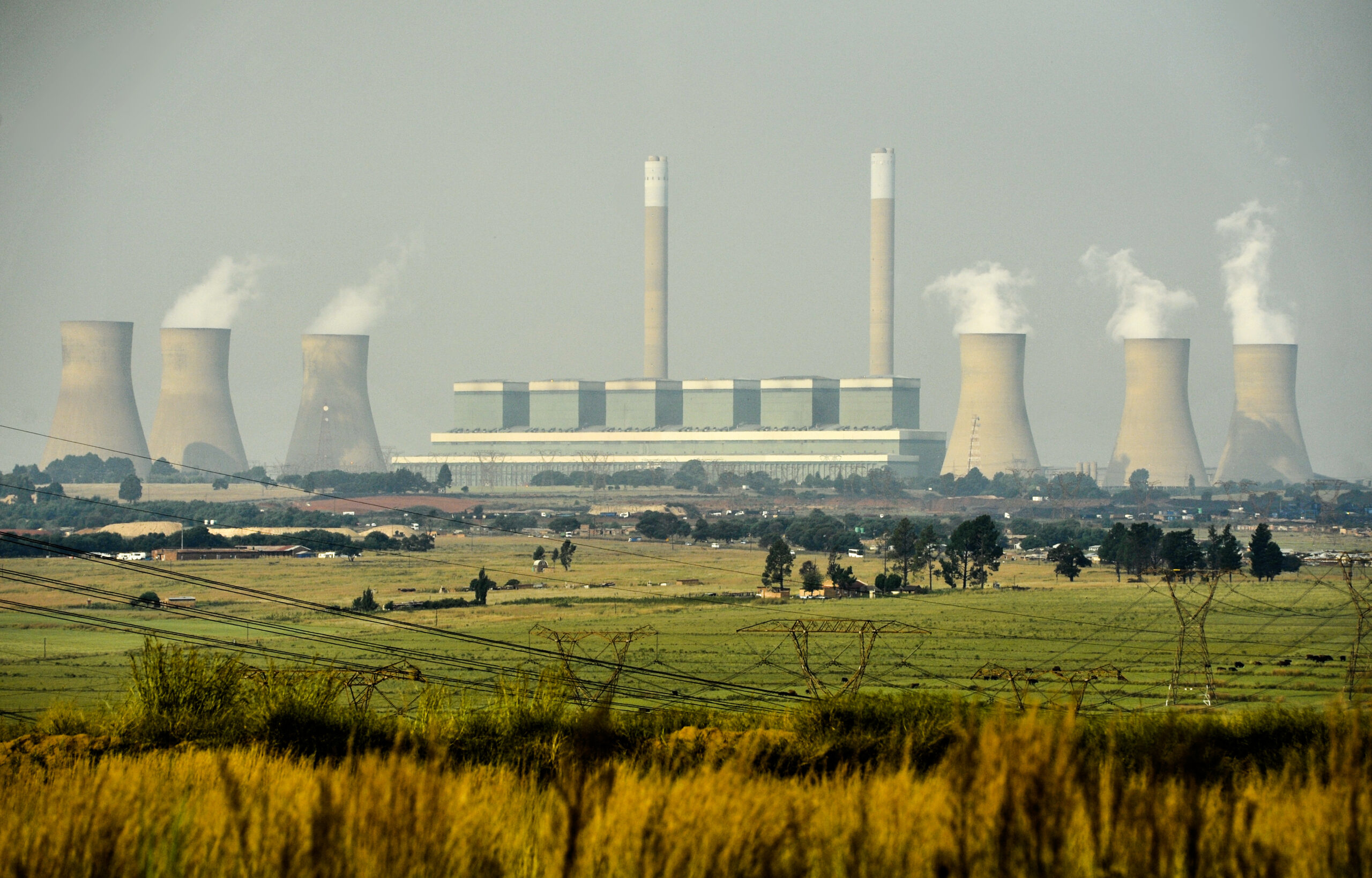Why renewable energy investment is a good idea
President Cyril Ramaphosa has compared South Africa’s energy crisis to the COVID-19 pandemic. Just as he once urged us to support health services through masking and avoiding unnecessary contact, he is now urging us to support the electricity sector through lower usage and renewable energy investment.
The president wants households to reduce pressure on the system by avoiding illegal connections, using power as sparingly as possible and installing their own solar power generation. Announcing a package of energy system reforms in July 2022, he called for South Africans to “join in a massive rollout of rooftop solar”. Renewable energy investment at the level of individual households will definitely take a load off the grid. But, to really solve South Africa’s problems, we need renewable energy investment on a much bigger, centralised scale.
Two big challenges with a shared solution: Renewable energy
The electricity sector is facing two huge challenges. One is the ongoing issue of load shedding, caused by a shortage of generation capacity. Every South African is familiar with the power blackouts that happen as a result. The problem has been going on for 14 years, holding back economic growth.
Power shortages also have serious implications for the nation’s health. An unreliable power supply can increase the risk of food-borne diseases by making it harder to refrigerate food and wash utensils properly. It also makes it harder for healthcare services. Everything from storing vaccines to running life-support machines relies on a steady supply of electricity. Living with power blackouts has even been linked to mental health problems, like anxiety.
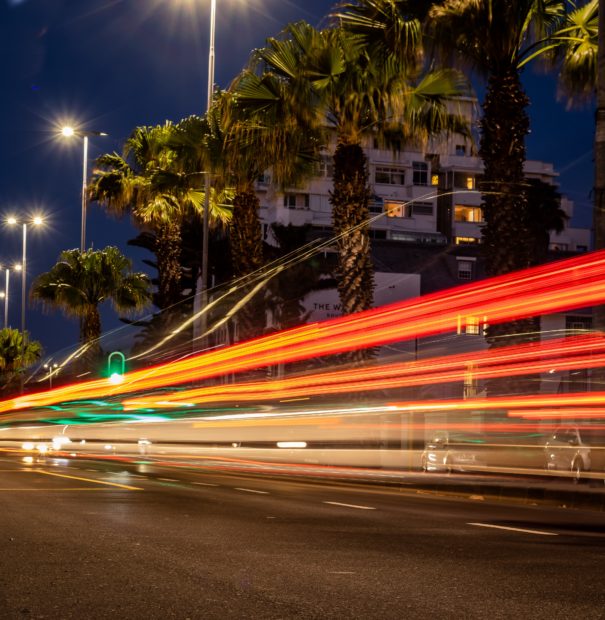
Photo credit: Luwadlin Bosman
The second big challenge is the commitment to phase out coal. At COP26 in November 2021, South Africa signed a declaration on the just energy transition. This recognises the need to act on climate change by cutting emissions. It emphasises the urgent need to retire coal power and step up renewable energy investment. But, decommissioning coal-fired power stations means losing their generation capacity. In the short term, this is making the power shortage problem worse. Eskom has tried to plug the gaps by using emergency diesel generators. While slightly less polluting than coal plants, they are still a very dirty fuel source. They are also costly.
One solution goes a long way to solving both problems: renewable energy investment. Stepping up investment in wind and solar could fill the gaps caused by retiring coal-fired plants. Unlike diesel, this is clean energy. It can meet demand with zero pollution and zero carbon emissions.
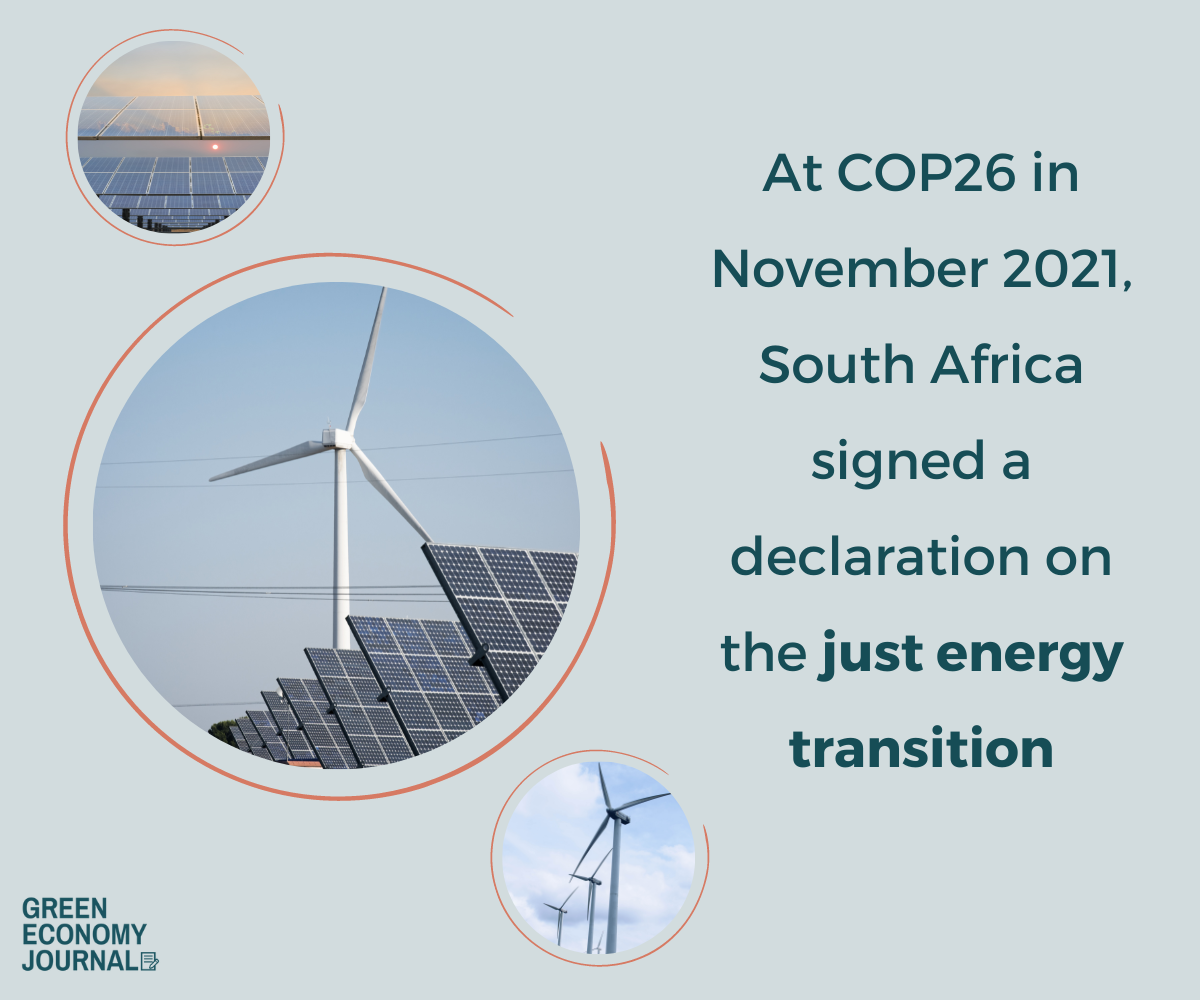
South Africa’s clean energy advantage
South Africa is perfectly positioned to exploit solar power resources. Most areas of the country receive more than 2,500 hours of sunshine annually. On average, a square metre of solar panel has a generation capacity of 220 watts. That is more than double what you would get in the United Kingdom and most European countries. This combination of many hours of sunshine plus high solar radiation levels gives South Africa a significant advantage. The country is in the top three in the world for solar energy potential.
South Africa also has huge untapped potential for wind generation. It is already a leader compared to the rest of the continent, with 2.5 gigawatts (GW) of installed wind power capacity. But, this is a tiny fraction of its potential. If wind farms were to be installed all over the country, the total potential power capacity would be 6,700 GW. This is enough to meet the entire world’s energy demand. South Africa’s current installed capacity is less than 0.1 per cent of this, at a time when Eskom is planning to import power from Botswana and Zambia.

The 6,700 GW figure is of course hypothetical. The Council for Scientific and Industrial Research’ (CSIR) calculations assume that every available inch of the country would be used, except for “exclusion areas”, like residential zones and national parks. So, how much space would actually be needed to meet South Africa’s own energy needs? CSIR’s estimate found that to generate 250 terawatts per year, roughly in line with current demand, South Africa would need to dedicate 0.6 per cent of its land mass to wind farms.
South Africa has the potential to meet its energy needs many times over with wind and solar alone. There are further underexplored clean energy resources, like tidal power and biomass.
A changing regulatory landscape

Photo credit: Robert Linder
To use this natural potential to the full and encourage renewable energy investment from the private sector, we need the right regulatory landscape.
President Ramaphosa has been taking steps to create this kind of environment. As part of a 10-point plan for dealing with the power crisis, he is bringing in legislation to remove barriers to new generation capacity. Ramaphosa said it currently takes nearly 1,000 days to get a renewable generation project from design to operation. He plans to cut delays and establish a single point of entry for all energy project applications. This will hopefully streamline the process of getting approval.
He has also removed the requirement for energy licences. The limit for requiring a licence had previously been raised from one megawatt (MW) of capacity to 100 MW. This alone has boosted renewable energy investment from the private sector. Between raising the cap in August 2021 and removing it in July 2022, there had already been 80 new projects with a combined planned capacity of over 6,000 MW.
There are also calls to lift the requirement that parts for solar panels have to be built locally. This could be lifted for two years or more to make it cheaper, simpler and quicker to get new solar capacity on stream.
André de Ruyter, the CEO of Eskom, has described private sector opportunities for renewable energy investment as “low-hanging fruit”. Leila Fourie, CEO of the Johannesburg Stock Exchange, commented that there are many opportunities for business-to-business partnerships in clean energy generation. She described South Africa as being at an “inflection point” thanks to the recent electricity industry reforms.
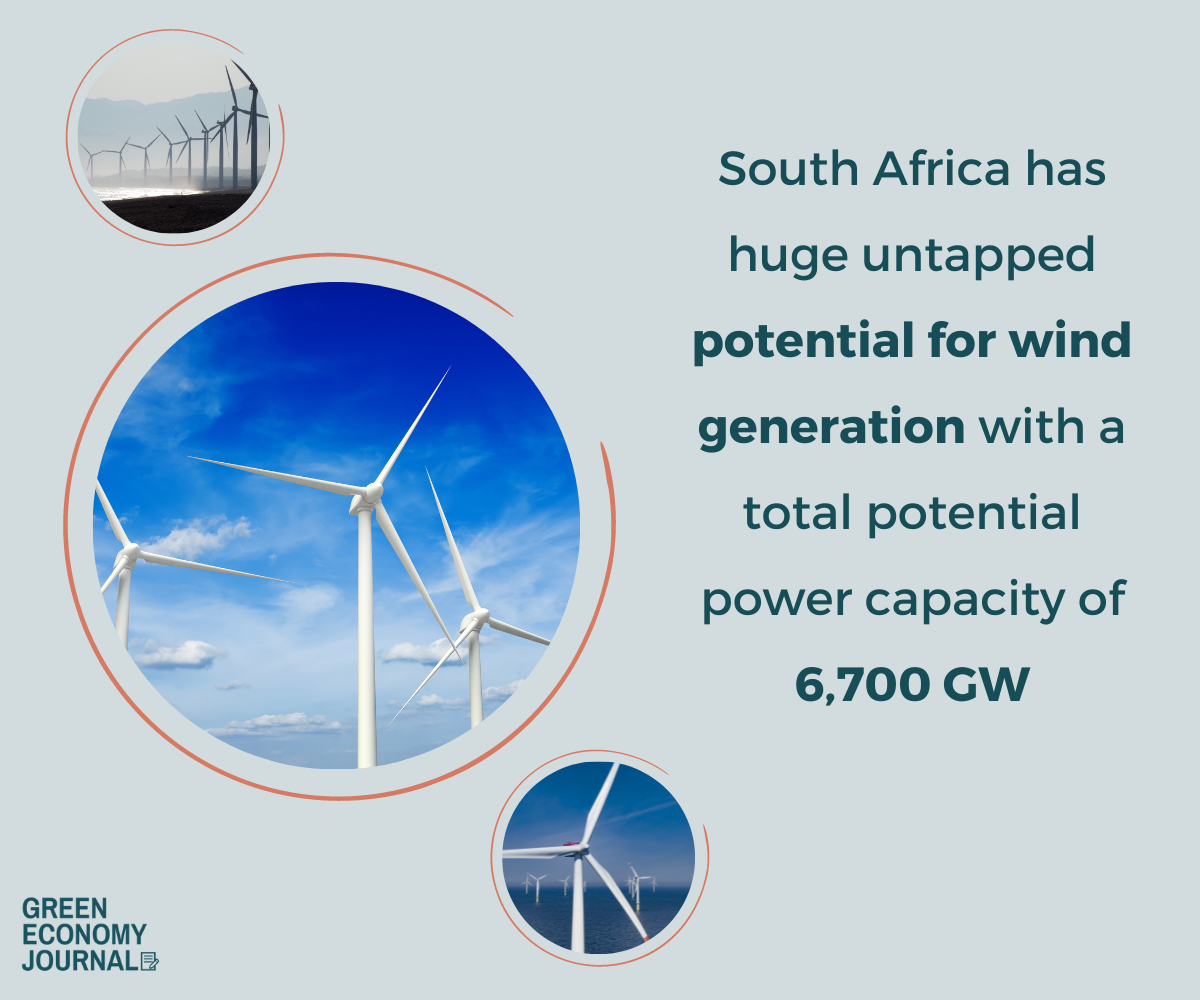
New clean energy opportunities for the private sector
The Energy Crisis Committee, formed in July 2022, represents collaboration between the government and the private sector. One of the routes under discussion involves new ways for Eskom to procure power. Public Enterprises Minister Pravin Gordhan announced in August 2022 that Eskom would be seeking exemptions to the usual procurement rules. These exemptions would allow the electricity utility to buy from existing independent power producers and private businesses with their own generation capacity.
This represents a huge opportunity for South African businesses. Onsite solar or wind generation could become a new revenue stream. Not only this, but it can help businesses to ‘green’ their operations and cut carbon emissions. Over 50 companies with operations in South Africa have already signed a pledge to procure 100 per cent renewable power by 2050. Investing in onsite renewables could turn this distant goal into an immediate reality, as well as being good for the bottom line.

Renewable energy investments on a smaller scale
There have been some misleading reports of a ‘solar tax’ penalising households with their own generation equipment. The opposite is true. The direction of travel is to encourage – not discourage – household solar and other clean energy generation.
The R900 surcharge proposed by Eskom would apply to every household that is connected to the grid. The logic behind the charge is that everyone who benefits from a grid connection should help to cover the costs. Therefore, customers with solar panels would not pay more than anyone else. In fact, they may soon receive payment.
In July 2022, Eskom began working on a new incentive scheme for household solar users. The feed-in tariff would pay commercial and residential users for any excess electricity they export to the grid. President Ramaphosa has also mentioned possible further tax incentives.
There has never been a better time for domestic electricity users to explore renewable energy investment, like buying rooftop solar panels. Some estimates say that solar installation could cut your monthly power bills in half. The panels not only pay for themselves long before the end of their 25-year lifespan but could add up to R100,000 to the value of your home.
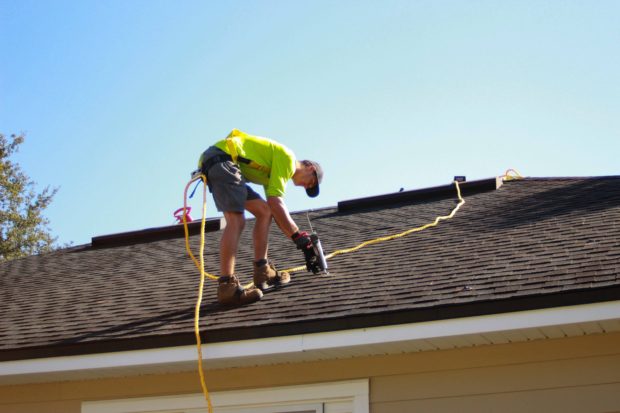
Photo credit: Raze Solar
Building a sustainable future
Renewable energy investment cannot solve South Africa’s power problems overnight. However, the extra capacity coming online through the new measures could make a big difference to load shedding in just a year or two. Minister Gordhan described it as “laying the basis for long-term energy security and a decarbonised electricity sector.”
Acting swiftly to scale up renewable energy investment will bring big rewards for South Africa. If the barriers to such investment are dismantled, the country can begin to build an electricity sector fit for the 21st century and beyond.

Related Articles
The bad reason South Africa is making good on emissions targets
If current carbon emission trends continue, South Africa might actually be on track to meet its 2030 emissions targets under the Paris Agreement. This is according to research done by the Department of Forestry, Fisheries and the Environment (DFFE). And the reason for this? Mostly load shedding. The data was revealed in the DFFE’s 2023 […]
Eskom: Green energy saves water
Generating electricity from fossil fuels has a hidden cost: South Africa’s already scarce supply of fresh water.


